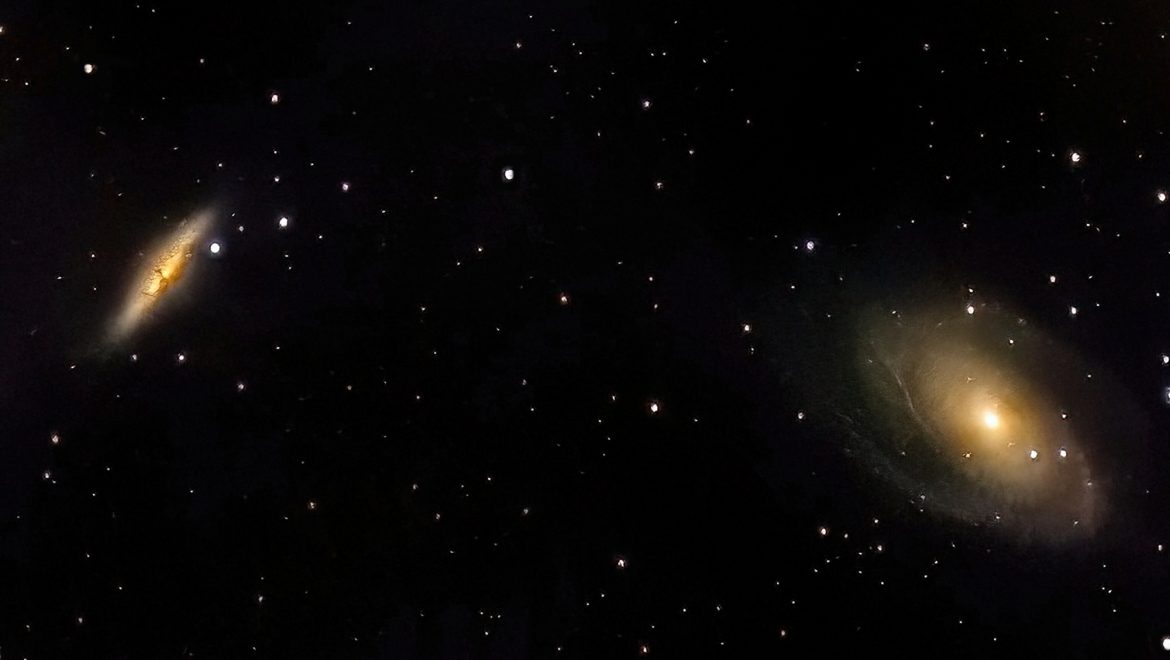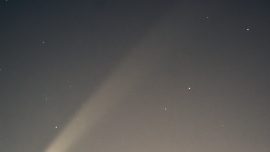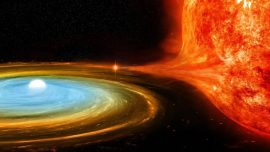What can we observe in the sky in March 2023?
What can we observe in the sky in March 2023?
March 2023 may be a particularly interesting time for astronomers. This month, an array of phenomena can be observed and studied in the night sky. From historically significant astronomical events to constellations and objects visible with the naked eye, the skies of March will provide astronomers plenty of opportunities to explore and understand the universe and its many mysteries. In this blog post, we will discuss the many wonders that await astronomers in March 2023.
Galaxy: Messier 82
Located in the constellation Ursa Major, Messier 82 (M82) is a starburst galaxy that is approximately 12 million light-years away from Earth. This galaxy is notable for its bright, elongated shape, due to the presence of large amounts of gas and dust being pushed out of the galaxy by intense bursts of star formation.
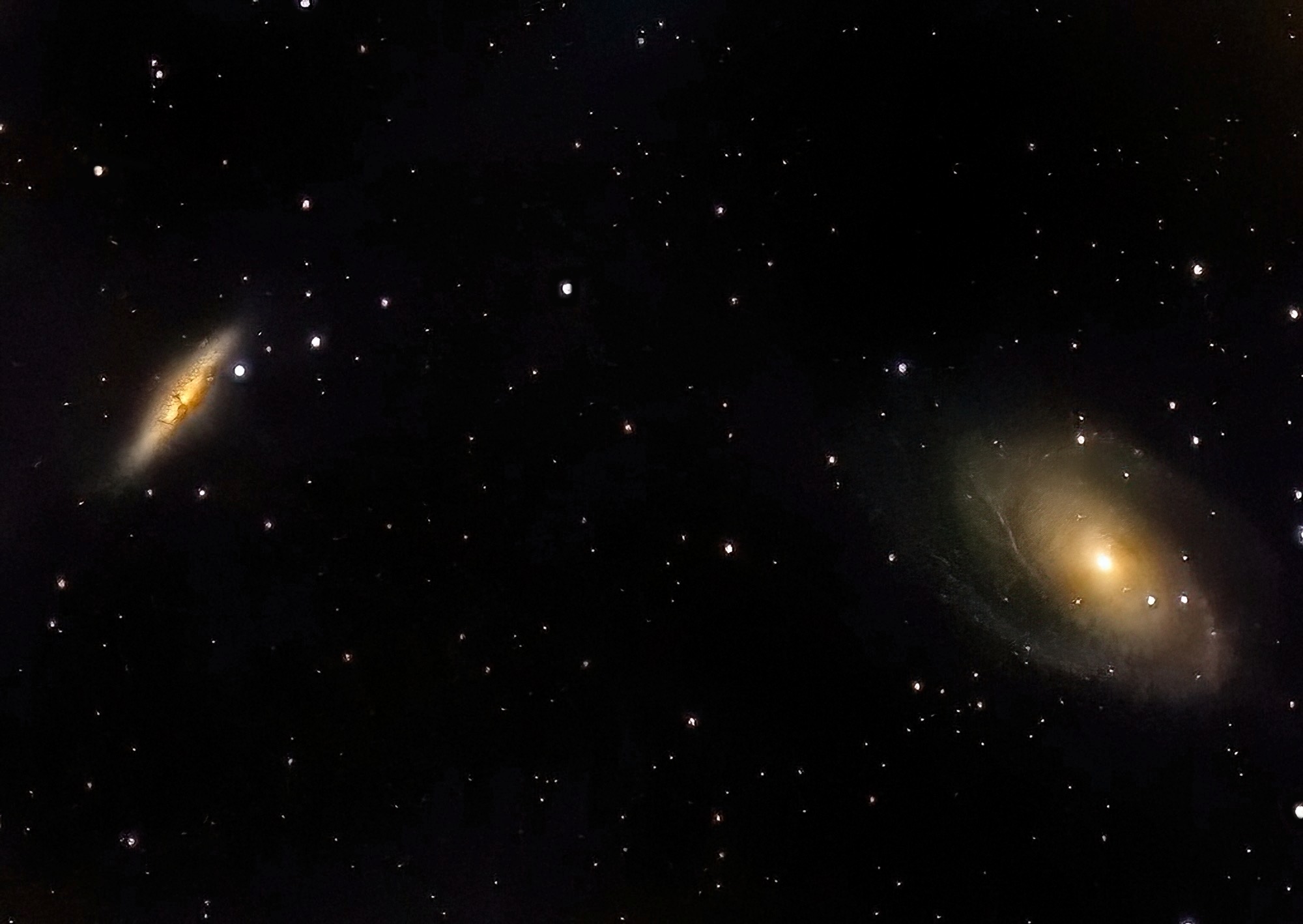
M81 & M82 by Harry Laytos using Vespera
Nebula: The Orion Nebula
One of the most famous and beautiful nebulae in the night sky, the Orion Nebula (also known as Messier 42) is a vast cloud of gas and dust that is located in the constellation Orion. This nebula is one of the closest regions of active star formation to Earth, and it is home to many young, hot stars.
Enhance your experience of M42 using our CovalENS technology, which enables you to change the composition of your photos with bigger frames, as seen on this amazing image shot by Sébastien Aubry.
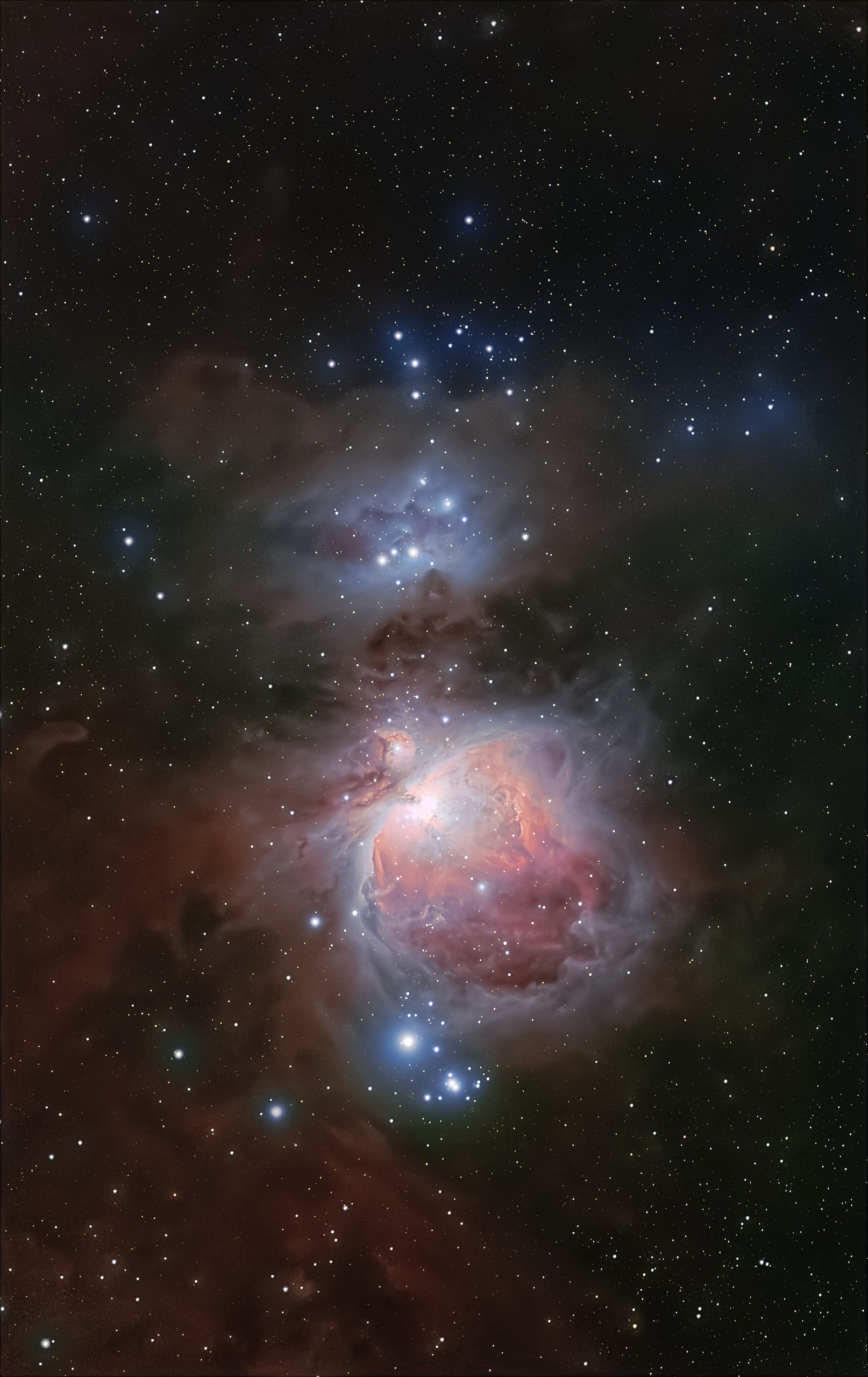
M42 (951 exp) with Vespera
Star Cluster: M11
M11, also known as the Wild Duck Cluster, is a stunning star cluster located in the constellation Scutum. It’s best observed during the months of summer, but it can be seen in March 2023 as it rises higher in the sky throughout the night. Using Vespera or Stellina, you’ll be able to see dozens of bright stars arranged in a loose, open cluster. The cluster is estimated to be around 220 million years old and located approximately 6,000 light-years away from Earth. It’s a popular target for amateur astronomers and is definitely worth checking out if you have a telescope and clear skies.
Object visible from the Southern Hemisphere: The Carina Nebula
Located in the constellation Carina, the Carina Nebula is a massive cloud of gas and dust that is home to many young, hot stars. This nebula is one of the brightest and most active regions of star formation in the Milky Way, and it is a favorite target for astronomers and astrophotographers alike.
Comet C/2022 E3
Discovered on March 1st, 2022, by Richard Grauer, comet C/2022 E3 is a long-period comet that is currently making its way through the inner solar system. In March 2023, the comet will be visible in the constellation Auriga, and it is expected to reach peak brightness around the middle of the month.
To observe comet C/2022 E3 with your Vaonis instrument, make sure to check out our article to set your observation station on manual mode here.
E3 Comet by Phillip McGee
Curious for more?
In addition to these specific objects, one of the most significant astronomical events of March 2023 will be the conjunction of Jupiter and Saturn. This rare event, often referred to as the “Great Conjunction”, occurs when the two largest planets in the solar system align in the night sky. Although conjunctions between Jupiter and Saturn happen approximately every 20 years, this particular event will be unique because it will be the closest alignment of the two planets since the Middle Ages. This rare alignment will be visible to the naked eye and will provide astronomers with an opportunity to study the solar system’s largest planets in a way that hasn’t been possible in centuries.
In conclusion, March 2023 offers plenty of exciting objects and events to observe in the night sky. From galaxies to nebulae, star clusters to comets, there is something for everyone to enjoy. With the right equipment and a little bit of patience, you can witness some of the most awe-inspiring sights the universe has to offer.

